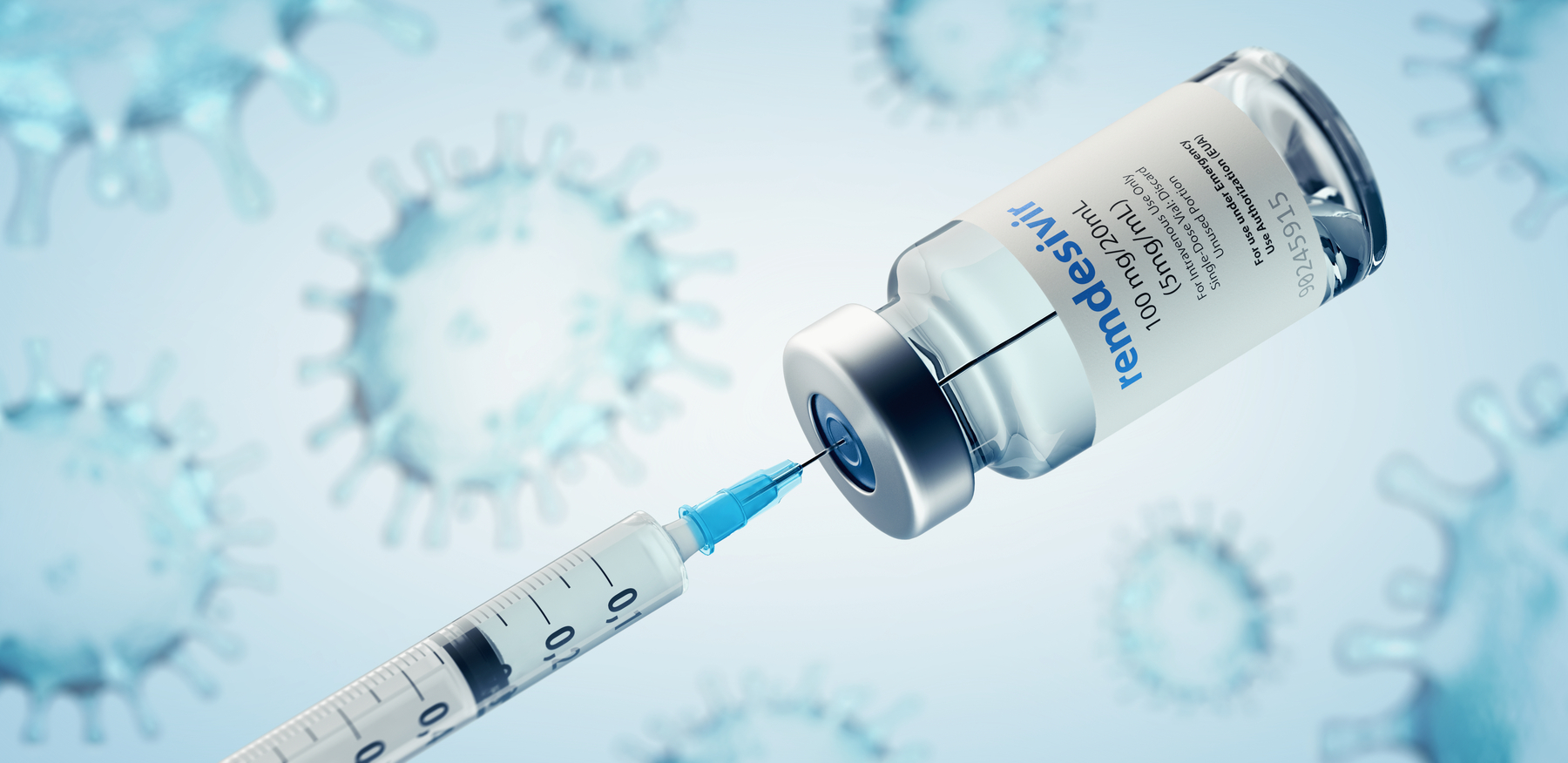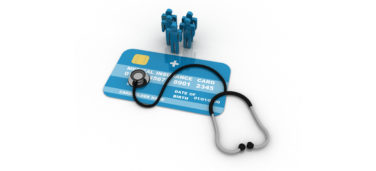At the end of June, Gilead announced its long-awaited pricing strategy for remdesivir, which clinical studies found as an effective treatment in reducing the hospital stay of COVID-19 patients. The company said that governments of developed countries will be charged $390 per vial (or $2,340 for a typical six-course treatment of the product), while private U.S. insurance companies would have to pay $520 per vial (or $3,120 for a six-course treatment). Additionally, uninsured patients would be covered under provisions of the CARES Act.
As part of the announcement, the U.S. Department of Health & Human Services (HHS) also revealed that it has secured more than 500,000 treatment courses of the drug for American hospitals through September. That represents 100% of Gilead’s projected production for July, 90% of production in August, and 90% of production in September.
Unsurprisingly, the cost was met with controversy. Public Citizen, a nonprofit consumer advocacy organization, called the price an “offensive display of hubris and disregard for the public” in a statement. However, the government and industry watchdogs like the Institute for Clinical and Economic Review (ICER) were more favorable to the announcement, with ICER even indicating that its own cost-effectiveness benchmark for the product placed a fair price for the product in range of $4,580 to $5,080.
But for those within the pharma industry, this announcement also comes with several ramifications that will have both short-term and long-term impact. To learn more about the reverberations the price of remdesivir will have on the industry, PM360 spoke with Jeremy Schafer, PharmD, MBA, Senior Vice President of the Access Experience Team for PRECISIONvalue, about the intentions behind Gilead’s strategy, what lessons pharma marketers can learn from this announcement, and the unintended consequences this will have on the future of price negotiations.
PM360: Is there anything unique about the pricing strategy Gilead announced for remdesivir?
Jeremy Schafer: It is unique from the perspective of being so up front about it. The concept of different customers paying different prices is not unusual. In fact, that’s a common criticism of the U.S. marketplace in that different health plans, pharmacy benefit managers (PBMs), and other payers pay different amounts depending on how much their negotiated rates are. But in this case, it’s right up front saying this set of customers pays one price and this set of customers pays another.
However, one of the things some of the news articles I’ve been looking at tend to miss is that they say it’s a difference between government or private payer, but looking at it deeper there is one price per government entities when they’re the direct purchaser. So, that would be like the VA, the Department of Defense, or a government business like that. But Medicare/Medicaid is not the direct purchaser. Instead, the hospitals are the ones buying it and then they’re billing Medicare and Medicaid. So, in that case, the Medicare and Medicaid patients would pay the same amount as the commercial insurers. So ultimately, that government business that gets the lowest price should actually be pretty small.
Do you have any sense or opinion about why Gilead would announce the deal like that with being so up front about who is paying what?
I think Gilead knew there was going to be a tremendous amount of scrutiny on the pricing of this product, so they probably figured if they were more transparent up front, then it would help mitigate some of that potential controversy versus doing it the more conventional way of having one WAC price and then discounting on the inside so that nobody could see. I think they also wanted to have that point of, “For U.S. government-controlled entities, they’re paying the same as other developed nations.” Because it has always been a common criticism, particularly by the Trump administration, that the United States is paying significantly more than other developed nations, such as in Japan. So, that gives them kind of a PR win, if you will. But, like I said before, the devil’s in the details because when you really get down to it, the amount of entities that are actually impacted by that is probably pretty small.
Do you think they actually achieved that PR win? While pharma’s reputation had been trending up during the pandemic, when this came out a lot of the public reaction was poor with some public groups even calling the price “offensive.” I know industry reaction was a bit better with ICER indicating that they thought the price would have been higher, but do you think Gilead could have managed this better or tried to position their message better to explain the price to the general public?
I think Gilead is making the most of a difficult situation. The challenge is that pricing in pharmaceuticals is, of course, extremely complex, and how it’s actually reimbursed—especially when it’s in-patient hospital medications like this product—is even more complicated. While Gilead has the public on one side, it has its own costs as well as its investors and its future research programs to think about, so they have to strike a balance between both of those.
One of the areas where they won, however, is that the federal government seems to be pleased with it, which going into an election is a win for Gilead. Aligning with ICER was a good move as well. ICER is pretty respected, including among the U.S. payer community, so coming in under their price estimate was a win as well.
From a patient perspective, they won’t see much in the way of cost directly for this product themselves. And if it gets them discharged sooner, then both patients and the hospitals will certainly be happy. There’s always going be some controversy and almost no matter what Gilead would have priced it at, certain stakeholders would have been upset.
Are there any lessons that pharma marketers can take from this, especially ones who may be responsible for crafting messages around other COVID treatments or vaccines that hit the market?
First, if you can get them, I think having some alignment with independent cost effectiveness analyses is important, and if you can’t get that done by an independent party then at least have it done internally in order to show that something has been done to determine what is required for the product to be cost effective. I would also suggest speaking to the benefits of the therapy, if you can.
For example, Gilead explained how even though the cost for an average course of remdesivir is about $3,000, if it decreases hospital stays—like clinical data indicates that it does—then you still end up saving $12,000. That is something marketers of future products will probably expand on even more because decreasing length of stay during this pandemic is important for a couple of reasons: 1) decreasing cost, and 2) it gets patients out the door, but probably, most importantly, the sooner you clear one patient out, you can put the next one in there.
For lack of a better analogy, it’s almost like turning tables in a restaurant. You just have to keep cycling them through. If you’re in a pandemic where one of your big concerns is running out of hospital beds—especially in intensive care units—if you can move patients through faster and get new patients in then that will probably translate into more lives saved. Manufacturers of future COVID products should talk about that as well because in our current situation, it’s really important to try to keep patients moving out of the hospital as much as they can.
In terms of the actual pricing negotiation for remdesivir, what did this announcement reveal about how future price negotiations might work for other COVID treatments or just any products in general?
It may mean some more up-front talk about differential pricing between different entities than there has been in the past. Like I said, there’s always been a difference with what Medicare pays, commercial pays, and the VA/DoD pays. But it’s always been behind the scenes details that are either never on the news or are just very complex and difficult to grasp. So, there may be a certain degree of more transparency.
One of the potential unforeseen consequences of this might be more intensity to the fire calling for government-controlled price negotiates. Because now if you’re somebody who advocates for government price negotiations, then you could use this case as an example to explain, “Hey, look, you’ve got two prices—one of which is government-controlled entities; the other one is where a lot of the negotiation is done by private industry. The government got the better price even though it has the lower number of lives in this case, simply because it’s the government. So, why shouldn’t we be doing this across the board?”
Do you foresee any other unintended consequences or ramifications that might be important for pharma companies to keep in mind?
The only other one that might happen—and this is from more of the private payer lens—is will this situation make manufacturers less willing to offer additional discounts on the other end? Traditionally, the WAC is seen as the starting point, and then PBMs and health plans are used to a back and forth where they push for rebates, discounts, and all the other stuff that they try to negotiate for after the WAC price is announced. But if there is now this up-front transparency about who is paying what, then instead of these negotiations on the back end the manufacturer could just say, “Well, no. I already came in with this price aligned with the cost effectiveness analysis and this is what I said I’m charging to this group of customers of the market. We’re not doing any price negotiation on the other side.”
Now Gilead was certainly able to do that because what other choices do you really have when it comes to COVID treatment? But it might be more complicated for future COVID drugs that come out and try to hold the same line.
What would happen if a cheaper option like the generic dexamethasone does prove to be effective treating COVID? Does that impact Gilead’s current price for remdesivir?
Gilead would probably need to stick with what they have at this point because dexamethasone has been generic forever and it’s extremely inexpensive so it’s a losing battle for Gilead to try to compete on price because there’s just way too much of a separation. Instead, Gilead would be better off carrying the day on the design of their trial, the benefits seen of their trial, the fact that the drug is targeted against viruses—some of the different unique benefits their product has. That’s where their push will be.








